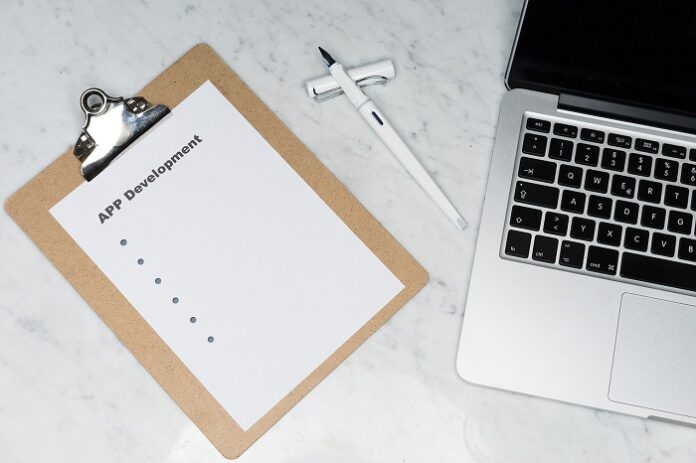According to Statista, approximately 110,000 apps are released every month through the Google Play store. Add that to the monthly releases from the Apple App Store, and you’re looking at a staggering 200k plus monthly app launches.
Some of these mobile apps are games, and others are entertainment apps and many business development apps. These applications have become a money minting machine, with the mobile apps industry projected to generate a whopping $693 billion in revenue in 2021.
While many companies are trying to stay ahead of the competition by finding opportunities in the app market, many don’t know how to design an app the right way.
Success within this competitive landscape can become a reality — but only if you follow a stringent app development process. A successful mobile app development process flow must have six phases. We’ll look into what goes on in each phase of the app development process.
1. Ideation
All apps start with an idea.
It is this idea that forms the basis or foundation for your app development. However, even if your idea is brilliant, it may not give rise to a successful app if it does not address a pain point or fill a need gap.
Therefore, for any idea to be converted to a successful mobile app, it must be feasible. And the feasibility of an idea can only be determined by conducting thorough market research and competitor analysis.
2. Wireframing
Mobile app developers often start the design work with sketches on paper. Wireframes are the digital form of these sketches.
These wireframes, also known as low-fidelity mockups, give your app a visual structure while laying down its functional requirements. Hence, wireframing helps to refine your idea and arrange all the design components in the right way.
3. Designing
Your app should deliver a seamless user experience in terms of usability and looks. At this phase, the design team works together to ensure the app’s design is interactive, spontaneous, and user-friendly. The design phase comprises many features, including:
- Informational architecture & workflows
- Wireframes
- Style guides
- Mockups
- Prototype
App developers use multiple tools, including InVision and Marvel, to create prototypes used to test for glitches and flaws in the UI/UX. The essence of this phase is to give developers blueprints and visual directions, informing them of the envisioned final product and how the process flow should be coordinated.
4. Development
Once you’re done with the design work, it’s time to get to the programming and coding phase, which is the most technical phase of app development.
But the development phase quite starts early on in the app development process. In fact, once an idea is conceived and validated through research, a working prototype is developed, which gives the user touch and feel of how the app will function.
At this phase, the developers will incorporate various features and functionalities outlined in the wireframe. The development process is composed of three basic parts (milestones)
- Back end/server technology
- Mobile app front end
- API
Once each development milestone is finished, it’s passed on to the quality assurance team for validation and authentication.
5. Testing
The next phase in the app development process is testing, where the app goes through structured quality assurance tests. Performing thorough tests throughout the app development lifecycle helps make the application stable, usable, and secure.
App testing also helps the development team to ensure the app meets the set goals. Typical tests that are performed include:
- Usability testing
- Functional testing
- Performance testing
- Regression testing
- User acceptance testing
Engineers and quality assurance analysts spend quality time maintaining and testing the code to ensure it’s bug-free and up to standards.
For larger projects that require tests to be carried out repeatedly, an automated testing application is preferred. Such applications may offer beneficial features like remote executions and automatic test deployment to improve execution speed.
6. Deployment
After testing, your app is now ready to submit.
Your developer will submit the app to your store of choice — Play Store or App Store — and wait for the approval. After that, the app will go through a review process, which may take a few days to weeks, and get approved if it follows the laid down development guidelines.
There you have it — the entire app development process in six simple phases. Feel free to comment and share.
Find a Home-Based Business to Start-Up >>> Hundreds of Business Listings.

















































